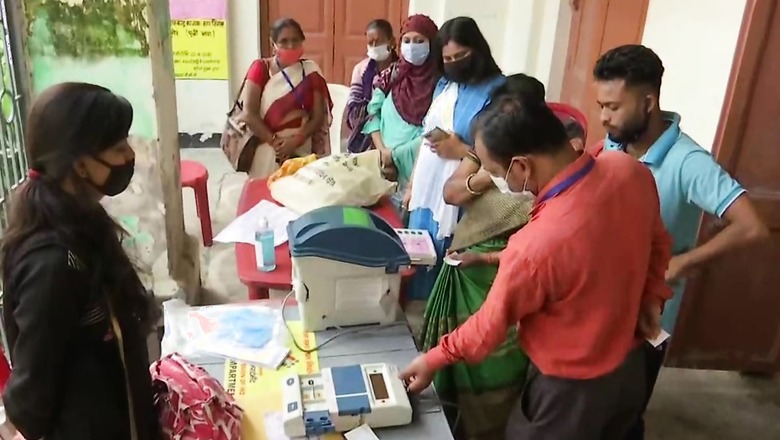
views
At the peak of the lockdown in April and May this year, the unemployment rate in Bihar was almost 47%. That meant nearly every second Bihari who was looking for work could not find any. One would assume that this state of affairs was playing out throughout the country at that time as a strict, nationwide lockdown had wreaked havoc on the economy and snatched the livelihoods of lakhs of Indians. But Bihar remained an outlier in unemployment, with the national unemployment rate nearly half at 24% during the same two lockdown months, as per CMIE data.
Bihar has long struggled with rampant unemployment besides also being at the bottom of the pecking order on other indicators. Take per capita income, for example. The state’s Economic Survey for 2019-20 shows that at Rs 30,617 in 2018-19, per capita income was just about a third of the national average, indicating the dismal purchasing power of an average Bihari.
The status of employment for women was also a concern. The worker population ratio, which denotes how many people in a given population set are employed, was just 3.9% for rural women in Bihar against the national average of 24.6%. Put simply, this meant that at all-India level, nearly every fourth rural woman was employed but in Bihar only about 4 in every 100 rural women found a job.
Given the dismal employment statistics, is it any wonder that potential chief ministerial candidates have been outdoing each other in promising millions of jobs if elected, never mind the ludicrousness of such claims? The Opposition coalition has promised a million government jobs (which includes filling up nearly half a million existing vacancies) in its manifesto while the ruling party has promised nearly double that number (not all in the government) after initially ridiculing the Opposition’s claims. The state goes to polls from Wednesday and it remains to be seen if the Bihari voter would prioritise job creation promises over considerations of caste and religion.
Meanwhile, CMIE data also show that the jobs’ situation has improved vastly in Bihar since the lockdown was lifted, but the unemployment rate of 12% in September was still way higher than the all-India rate of 6.67%. Not just that, the unemployment rate has been rising and the rise has been faster than that of the national rate. “The situation seems to have turned worse since 2018. In 2016 and 2017, the unemployment rate in Bihar was lower than the all-India average. Since 2018, it has been consistently higher,” CMIE MD & CEO Mahesh Vyas said in a newspaper column.
Jobs are scarce in Bihar and if one gets work, compensation is much lower than in other states. Here’s what the latest data from the state show:
• The per capita income for Bihar has increased from Rs 21,750 in 2011-12 to Rs 30,617 in 2018-19. However, the state continues to have the lowest per capita income among all states and the figure was only 33.1% of the national average (Rs. 92,565) in 2018-19. Bihar needs extra push to increase its economic activity so that the number converges towards the national average of per capita income.
• The worker population ratio (WPR) for male workers in rural Bihar was 64%, about 8 percentage points lower than the all-India average. The WPR for female workers was abysmally low at 3.9% in rural Bihar. In 2017-18. 55.9% males were self-employed and the share of casual labour at 32.1% was significantly higher than the all-India level (24.3%).
• The contribution of Bihar to the country’s industrial output has been extremely limited, at 0.5% of total Gross Value Added (GVA) of the industrial sector in India in 2016-17. In earlier years, this ratio was even lower at around 0.3 percent of total GVA.
• On an average, a factory in Bihar employs only 40 workers, which is almost half of the all-India average (76.7 workers) and one-third of a factory’s employment-generating capacity in Haryana (120.7 workers).
• The low productivity of labour also leads to a lower level of compensation to the workers in Bihar. For instance, a worker in a factory in Bihar received Rs 129,600 per annum as wages, salaries and bonus, a third of the prevailing compensation level in neighbouring Jharkhand (Rs 373,800) and Maharashtra (Rs 344,000), the two best performing states in India. At the national level, the average compensation per annum was Rs. 252,800.
• In Bihar, the biggest employment generating industry for working males was agriculture, forestry and fishing, accounting for nearly 45% of all employment. Construction and manufacturing sectors together accounted for every fourth job for men. In the case of women, while agriculture remained the top employer (nearly 54%), every fourth job was found in the education sector.
• It is only in the overall expenditure on the social sector that Bihar has outpaced the all-India numbers under Nitish Kumar. Per capita development expenditure has grown by 14.2% rise in the state between 2011-12 and 2018-19 against all-India growth of 13.3%, with spending on education and health outpacing national percentages.
With job creation remaining an empty promise for years and also leading to massive exodus of young workers from the state each year, perhaps the Bihari voter will cast her ballot on economic considerations this time.
Read all the Latest News and Breaking News here














Comments
0 comment